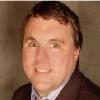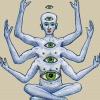Here is one thing that Ive found. They refer to it as grafting but it doesnt sound all that different to migrating stem cells into the area like the
Longecity funded microglial stem cell research project. Liver Growth Factor Promotes the Survival of Grafted Neural Stem Cells in a Rat Model of Parkinson's Disease
http://www.ingentaco...000001/art00003
Abstract:
Neural stem cells (NSCs) with self-renewal and multilineage potential are considered good candidates for cell replacement of damaged nerve tissue. Several studies have focused on the ability of the neurotrophic factors coadministration to improve the efficiency of grafted NSCs. Liver growth factor (LGF) is an hepatic mitogen that promotes regeneration of damaged tissues, including brain tissue. It has neurogenic activity and has partially restored the nigrostriatal dopaminergic system in an experimental model of Parkinson's disease. Present results demonstrate that in the dopamine- depleted striatum of 6-hydroxydopamine-lesioned rats, grafted NSCs retained their ability to differentiate into neurons, astrocytes, and oligodendrocytes. NSCs also differentiated into microglia/macrophages and endothelial cells. Thus, 23 ± 5.6% of them were inmunoreactive for isolectin IB4, and a small population integrated into blood vessels, showing an endothelial-like morphology. Intrastriatal infusion of LGF promoted the viability of the implants, and favored their differentiation to an endothelial-like phenotype. Moreover, LGF infusion raised the expression of the anti-apoptotic protein Bcl-2 by 3.9 ± 0.9 fold without affecting the levels of the pro-apoptotic protein Bax. Since LGF-treated rats also showed a significant reduction in apomorphine-induced rotational behavior, our results suggest that administration of this factor might be a convenient treatment for Parkinson's disease cell replacement therapies based on NSCs transplantation.
Edited by brokenportal, 25 March 2012 - 03:35 AM.














































